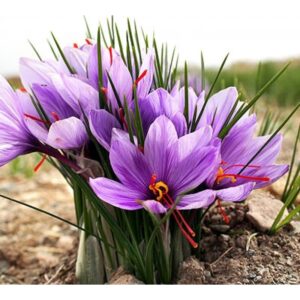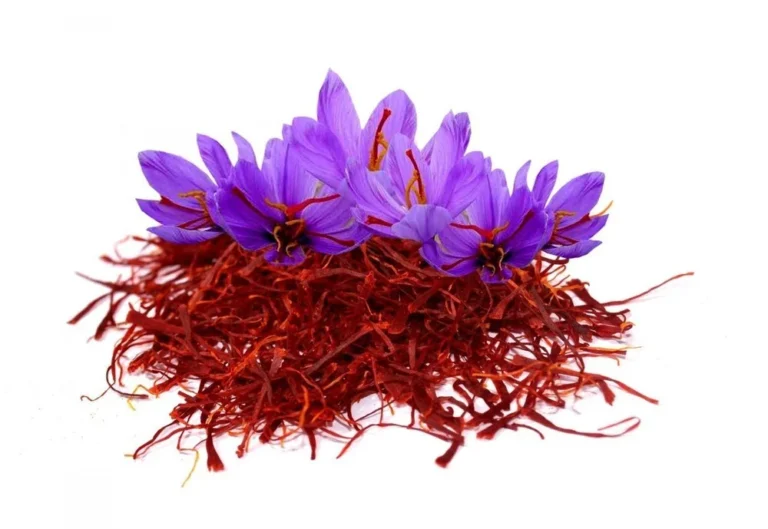The Power of Kesar (Saffron) in Ayurveda: A Golden Herb for Wellness
Kesar, known as Saffron (Crocus sativus), is one of the most prized and luxurious spices in the world, used not only in cooking but also in traditional healing systems such as Ayurveda. This golden-hued herb has numerous health benefits, from promoting skin health to balancing bodily energies. In this post, we will explore the properties of Kesar through Ayurvedic categories and discover how it can enhance your health.
1. Kesar and Dosha Balancing
In Ayurveda, each individual is believed to have a unique combination of three doshas: Vata, Pitta, and Kapha, which govern different functions in the body. Herbs are used to balance these doshas, and Kesar is particularly useful for Pitta dosha.
- Pitta Balancing Herb
- Pitta governs heat, metabolism, and digestion. When Pitta is in excess, it can lead to conditions like inflammation, digestive issues, skin irritations, and irritability.
- Kesar (Saffron) has cooling properties, making it perfect for balancing the fiery and intense nature of Pitta. It can help calm skin rashes, reduce inflammation, and promote digestive health.
- How it works: Saffron cools the body, soothes irritability, and helps balance fiery emotions, making it an excellent remedy for Pitta-related imbalances.
2. Kesar Based on Actions (Gunas)
Ayurvedic herbs are classified based on their properties or Gunas. Kesar fits into several important categories due to its rejuvenating, anti-inflammatory, and digestive-enhancing properties.
- Rejuvenating Herbs (Rasayana)
- Saffron is classified as a Rasayana, a rejuvenating herb that promotes vitality, improves overall health, and supports longevity.
- How it works: Consuming saffron can nourish the body and mind, making it a great option for improving energy levels and combating fatigue.
- Anti-inflammatory Herbs
- Kesar has strong anti-inflammatory properties. It can reduce internal and external inflammation, making it helpful for conditions like arthritis and skin inflammation.
- How it works: The compounds in saffron, like crocin and safranal, have potent anti-inflammatory effects that soothe conditions caused by excess heat in the body.
- Digestive Herbs (Agni Enhancers)
- Saffron helps stimulate the digestive fire or Agni, which is crucial for proper digestion and nutrient absorption.
- How it works: Saffron aids in promoting healthy digestion, improving appetite, and addressing digestive issues like bloating or indigestion.
3.  Kesar Based on Therapeutic Functions
Kesar Based on Therapeutic Functions
In Ayurveda, herbs are classified based on their primary therapeutic functions. Kesar provides a wide array of benefits for the body, including boosting the immune system, improving mood, and enhancing skin health.
- Immune System Support
- Saffron contains powerful antioxidants, such as carotenoids, which help strengthen the immune system by fighting oxidative stress.
- How it works: Regular consumption of saffron can support immune function and protect the body from infections and illnesses.
- Nervine Tonics (For the Nervous System)
- Kesar is known for its ability to uplift mood and reduce symptoms of stress and anxiety.
- How it works: Saffron has a calming effect on the nervous system, helping reduce stress and promote emotional balance. It is often used as a natural remedy for mild depression or anxiety.
- Skin Health
- Saffron is highly valued for its skin-enhancing properties. It can be used both internally and externally to promote glowing, clear skin.
- How it works: Saffron’s antioxidant and anti-inflammatory properties help reduce pigmentation, lighten dark spots, and promote a youthful complexion. It’s a common ingredient in Ayurvedic skincare remedies.
4. Kesar Based on the Part of the Plant Used
In Ayurveda, herbs are often classified by the part of the plant used. For saffron, the stigma (the red threads) is the most valuable part.
- Stigma (Threads)
- The threads of the saffron flower, known as the stigma, are carefully hand-harvested and dried to create saffron.
- Why it’s used: The stigma contains the highest concentration of saffron’s active compounds, including crocin, safranal, and picrocrocin, which contribute to its medicinal benefits.
5. Kesar in Different Dosage Forms
Saffron is available in a variety of forms to suit different preferences and needs. Here are the most common forms:
- Powders (Churna)
- Saffron is available in powder form, which is commonly used in Ayurvedic formulations and culinary recipes.
- How to use: A pinch of saffron powder can be added to warm water, milk, or tea for a rejuvenating effect.
- Oils (Taila)
- Saffron-infused oils are commonly used in Ayurvedic skincare and massage therapies.
- How to use: Saffron oil can be applied to the skin to reduce pigmentation and promote a radiant complexion, or used in massages for its calming effects.
6. Conclusion: The Golden Herb for Wellness
Kesar (Saffron) is a versatile and powerful herb in Ayurveda, valued not only for its luxurious flavor but also for its incredible health benefits. Whether you’re looking to balance your Pitta, enhance your skin’s appearance, or improve digestion, saffron can support your wellness journey. With its rejuvenating, anti-inflammatory, and calming properties, Kesar is truly a golden herb with a wealth of benefits for the mind and body.
Key Takeaways:
- Pitta Balancing: Saffron helps soothe heat-related imbalances like inflammation and skin irritations.
- Rasayana (Rejuvenating): Boosts vitality and longevity.
- Anti-inflammatory: Reduces inflammation in the body.
- Digestive Support: Stimulates digestive fire and improves appetite.
- Skin Health: Promotes glowing, clear skin.
- Available Forms: Powder and oil for internal and external use.



